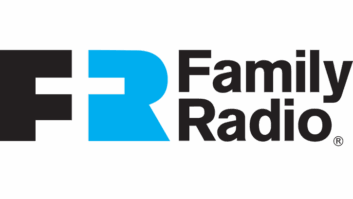Photos
(click thumbnail)Internal view of the transmitter from a 1966 company brochure
(click thumbnail)This 1960 print ad, believed to be from Broadcast Engineering, shows Paul Gregg. The text prices a kit-form Bauer 707 at $3,495.
(click thumbnail)Right-Click here to download the 707 schematic.
For many of us, it’s the feeling of magic that brings us into radio. Nowhere in the panoply of broadcasting does that magic seem to reside as potently as in the transmitter room.
In days past, glowing tubes of all sizes and hues powered the station, lit the night, warmed the space, seemed to sizzle with radiant energy. Something extraordinary is vested in being able to send a message through the air to people who need information, comfort, friendship, entertainment, community.
Most of us started in the industry at low-power community stations. The heart of the transmission plant usually was a 1 kW AM transmitter, many acquired when Class IV stations were allowed to go to 1,000 watts. These classic workhorses, made for us by RCA, Bauer, Gates, Collins, Raytheon, CCA and others, had personalities.
Of all those 1 kW boxes, the most interesting and innovative may have been the Bauer 707.
Fritz Bauer had been designing on his own in California for years – we wrote about the Bauer transmitter company here on Oct. 6, 2004, a story you can find on RW’s Web site – but the across-the-board increase of daytime power of most Class IV stations to 1 kW created the need for a company and transmitter to meet the need for perhaps a thousand new transmitters.
In retrospect, all these transmitters seem elemental. But in their day they were considered high-tech, full of refinements and meaningful technical innovations such as remote-control capability and auto-recycling after overloads.
The major innovation that differentiated the 707 was that it was available as a kit. You could construct the transmitter on-site, Heathkit style using detailed instructions, at your own speed and then have it type certified by a traveling field engineer. Many engineers accumulated intimate transmitter knowledge, literally piece by piece, as they assembled their 707s.
As in the case of building a car or any similar big-ticket item, competition brought the “list price” of these units into a range that set the design engineer’s budget. To make the price, the designer had to choose where to put the money, what features or component investment deserved the best.
Tube manufacturers offered two “bottle” solutions for 1 kW, the 4-400 tetrode and the 833 triode. Ordinarily, two of these were operated in parallel for the RF output and two in push-pull for the audio modulator.
The Bauer used 4-400s in the power stages and selected the balance of the tube complement from types that could be obtained from the local TV repair shop.
Where did the money go in a 707? In my observation, the quality went into the transformers and the metering. Most 707s still have their original transformers – a tribute to the designers and manufacturers. On the metering side, rather than parsimony of meters with input selector switches, the 707 has a meter on every critical parameter.
An onboard dummy load substituted for the antenna as a troubleshooting and tuning aid; this was a useful feature. Usually made up of power resistors in competitive transmitters, the 707’s onboard dummy was made of German toaster wire with a unique scheme to zero out the reactance from the wire coiling.
Most 707s are still ready for service. Many are on air right now, from Honduras to Utica to Viet Nam.
The real story of these 1 kW beauties is not how they do it but what they do. Providing reliable radio service to communities throughout the world. Since the 1950s, literally billions of hours or radio programming have passed through them.
Please send your 707 or any 1 kW stories and share your memories with us. We’ll write about other models in future Milestone articles.
For the tube lovers out there, the schematic for the 707, a tribute to Fritz Bauer’s elegant design work, is on the RW Web site as part of this article at www.rwonline.com.
Buc Fitch’s article about Paul Gregg, Fritz Bauer and the 707 also is online at www.rwonline.com Click on the Special Report tab and scroll to stories from October 2004.
All Bauer transmitters, including the 707, are supported for parts and service by Bauer Transmitter. Contact the company at www.bauertx.com.









